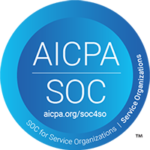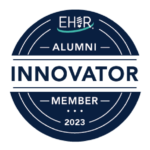I had an opportunity to attend HLTH ’21 in Boston earlier this month. As promised, the conference served up insightful content from companies and clinicians, innovators and influencers, politicians, policy experts and public officials, even a few celebrities.
Like most people at HLTH, I spend most of my waking hours trying to solve some aspect of healthcare. When we’re all in the same venue, you gain a new sense of the big picture and appreciation for all the different ways we address one piece or another.
You can imagine burning through a notepad or iPad battery jotting down all your notes, thoughts and observations at an event like this. Despite the diversity of topics, I couldn’t help but notice three common themes.
1) The ‘Last Mile’ Is the Problem
Everyone from marathoners and motivational speakers to utility companies talks about the last mile being the most difficult. That’s healthcare’s challenge right now.
Prior to joining Rx Savings Solutions, I spent much of my career focused on getting the right data into the EHR. Today the lynchpin is pulling the right data out of various care silos and making it actionable.
Several HLTH speakers talked about how new interoperability standards will force everyone to make data available. However, there’s real concern that most healthcare entities will provide just enough to check the compliance box. Also, there’s little work toward completing the workflow—where data can flow into point solutions that generate actionable steps and feed those actions back into health systems.
Today, these integrations are made one provider and solution at a time. There is hope that by 2023, FHIR (Fast Healthcare Interoperability Resources) standards will allow some actions to be streamlined, specifically around prescriptions.
2) Consolidation of Care Is Critical
Did you know there are roughly 350,000 health and wellness apps and solutions on the market? Or that 90,000 were released in 2020 alone?
The explosion in innovation and specialization is remarkable. The average large, self-insured employer has 16 different health and wellness vendors. At the same time, this illustrates how broken and fragmented healthcare still is. You have all these point solutions trying to solve different parts of a bigger problem. Consolidation of care across the point solutions (including reimbursement models) will enable a more seamless, personalized experience and effective outcome. I think it’s inevitable.
It also helps explain why RxSS strategic partners like Accolade and Sapphire Digital are getting traction by integrating different point solutions and managing care in a central manner. That reduces the burden on employers and health plans to work across them.
3) Pharmacy Underpins Everything
As you might expect, drug pricing was still a major topic at HLTH ‘21. One look at the agenda and sponsors gives you an idea of how many people are trying to solve it in some capacity.
Prescription therapy is part of nearly every patient journey, and pharmacy is the most frequent and repeated health benefit. No wonder so many solutions are designed to reduce drug costs in one way or another—MTM, adherence, specialty management, generic utilization, discount cards, etc.
It makes me think back to the 350,000 available apps and the 16-vendor average for employers. I think about data interoperability, the benefits of centralized, seamless integrations and experiences. And how pharmacy connects to the bigger healthcare picture.
I was encouraged at HLTH, and excited that Rx Savings Solutions is in a central position to help change that picture for pharmacy. With a continued focus on the last mile, we can solve a breadth of challenges by simplifying the pharmacy experience.



